The common land around our area is protected by an Act of Parliament passed in 1893. This created the Banstead Commons Conservators (BCC) tasked with protecting and maintaining the four areas of common land in the northern part of the Borough of Reigate & Banstead.
Early History
When the railways were first built across part of the common land in the area, a Yorkshire landowner, Sir John Hartopp, saw an opportunity to buy up commoners’ rights to the land, enclosing the area and then build on it to make a very large profit. Local residents were appalled by this behaviour and acted against Sir John in the Court of Chancery. This led to the Corporation of the City of London formally preserving Banstead Commons for the benefit of the people. Sadly, wealthy landowners continued to abuse the land until the Metropolitan Commons (Banstead) Supplemental Act was passed in 1893. This appointed a group of Conservators and preserved the land, however unfortunately it did not provide for a funding process necessary for the Conservators to comply with the duties imposed by the Act.
The Act required that eight Conservators be appointed, two by the owners of the land and six by the Parish of Banstead.
Modern History
In 1955 the local authority took over ownership of the land (at that time Banstead Urban District Council which joined with Reigate in 1974 to become the Borough of Reigate & Banstead). An agreement was put in place that the local authority would provide a grant to support the BCC’s work.
This has continued since then with the eight Conservators being elected by the Council and funding to help cover running costs being provided by way of a Council grant.
Over the years, the Conservators have also sought and received funding from other sources. This has included grants from the Rural Payments Agency and Natural England. Our withdrawal from the European Union means, however, that one of these grants, the EU Single Farm Payment, is being reduced and will be lost in 2024.
The pandemic also put additional pressure on the Conservators because visitor numbers increased resulting in more maintenance work without an appropriate increase in funding.
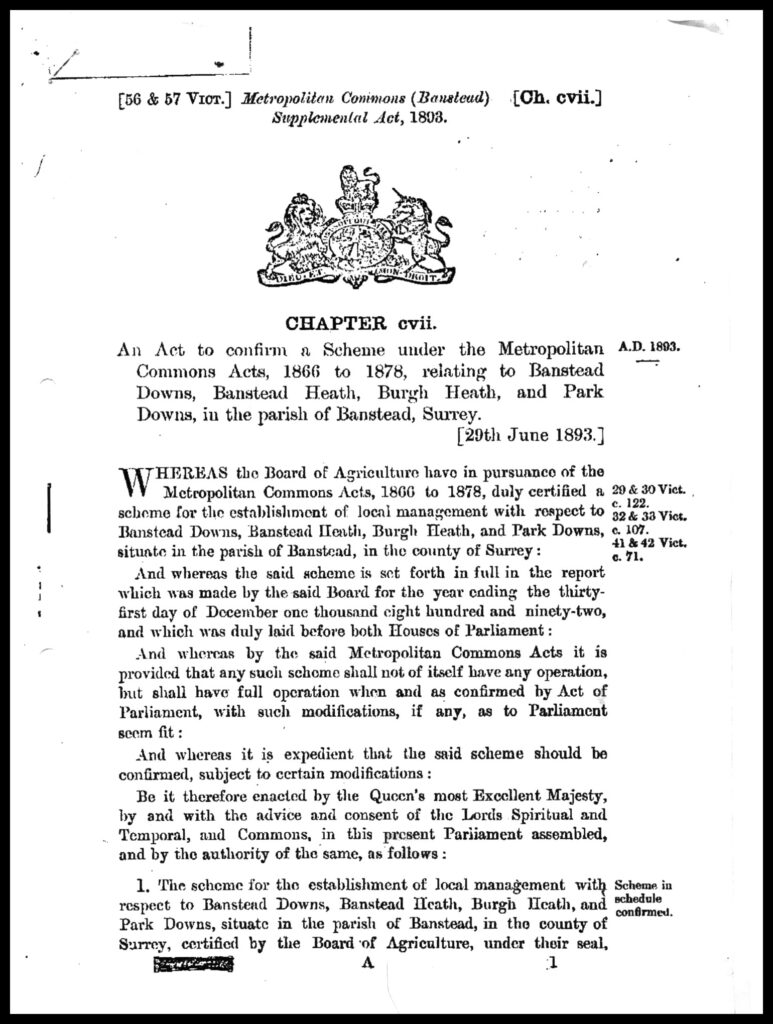
What the Banstead Common Conservators do
The BCC has a statutory duty to protect and maintain Banstead Commons and to ensure free access to the public on the land that it manages.
Under the 1893 Act it has a responsibility to:
- Maintain and protect the integrity of the Banstead Commons
- Ensure the free, legal and safe access of all to the Commons
- Provide safe and healthy working environment for employees
- Maintain and improve the status of Sites of Special Scientific Interest
However in recognition of the Commons being an important local amenity to residents and visitors the BCC also has a responsibility to:
- Maintain and improve the Commons as an amenity for all
- Maintain and improve the Commons as a wildlife habitat
The Conservators do this with a staff of two full-time keepers and a manager, although the BCC is in the process of recruiting additional staff. There are also many volunteers physically helping maintain the environment.
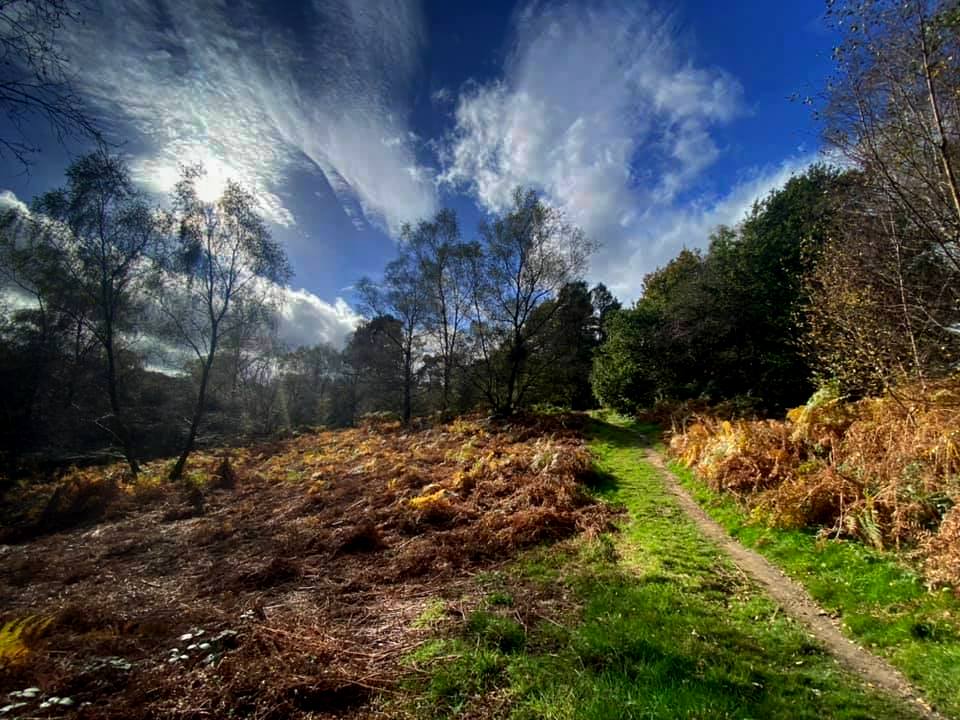
The Land that BCC Manages
There are four plots of land managed by the Banstead Commons Conservators totalling 1350 acres.
As well as providing important recreational areas, the open spaces of the commons are important wildlife habitats. The northernmost two, Banstead Downs and Park Downs, are chalk downland, designated as Sites of Special Scientific Interest (SSSI), an important aspect of their attraction to users.
On Banstead Heath and Burgh Heath, a thicker layer of impervious clay and flints overlays the chalk and these physical properties affect both the appearance of the commons and their flora and fauna.
In an age of increasing urbanization there is significant responsibility on the Conservators to manage the areas with maintenance of the existing wildlife and ecology very much in mind.
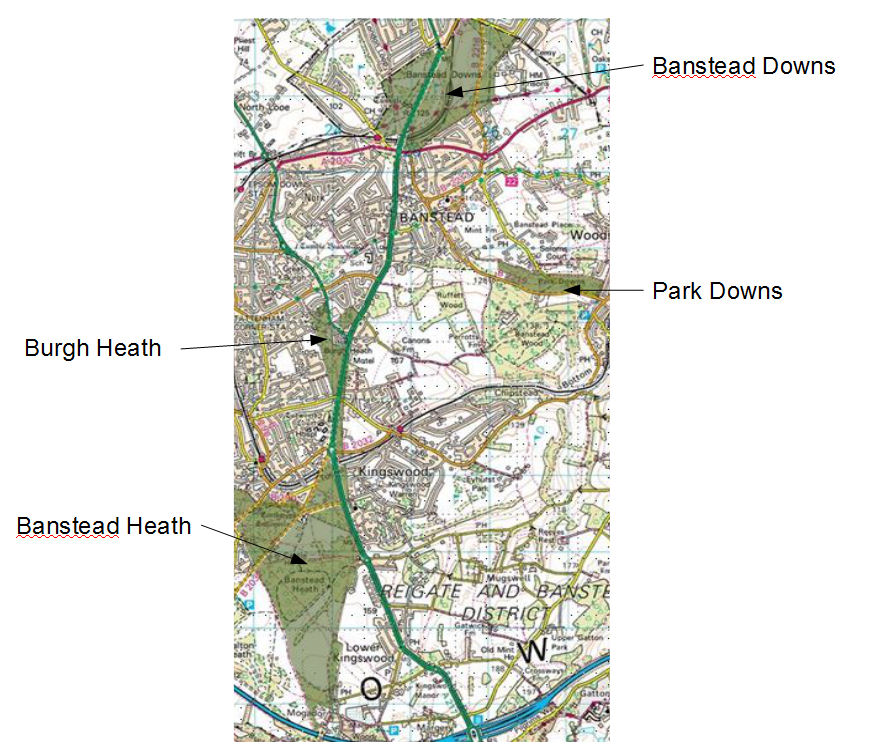
Banstead Downs
This consists of 430 acres of north-facing chalk downland interspersed with scrub and woodland. It is located at the very north of the Borough along the A217 known locally as “the mad mile”. It was designated a Site of Special Scientific Interest in 1955 due to the flora and invertebrates and birds found on the site.
The rare Small Blue Butterfly is found here which feeds on kidney vetch which grows in abundance on the site, along with other specialist chalk downland plants. In total 32 species of butterfly have been recorded on this site. The site has been monitored by Plant life since 1995 because of two nationally rare species of plant that grow here, the Early Gentian and Broadleaf Cudweed. Summer warbler visitors include Common Whitethroats, Blackcaps and Chiffchaff and you can find all of our favourite woodland bird species in the corridors of secondary woodland.
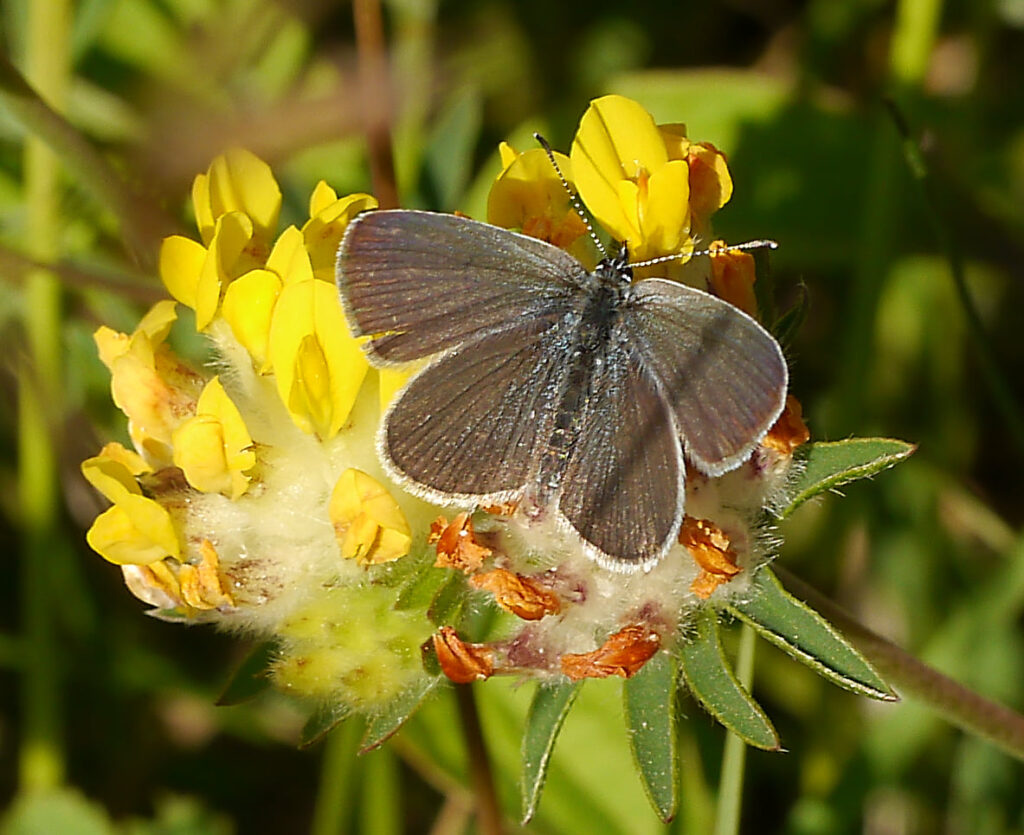
Small Blue Butterfly on Banstead Downs
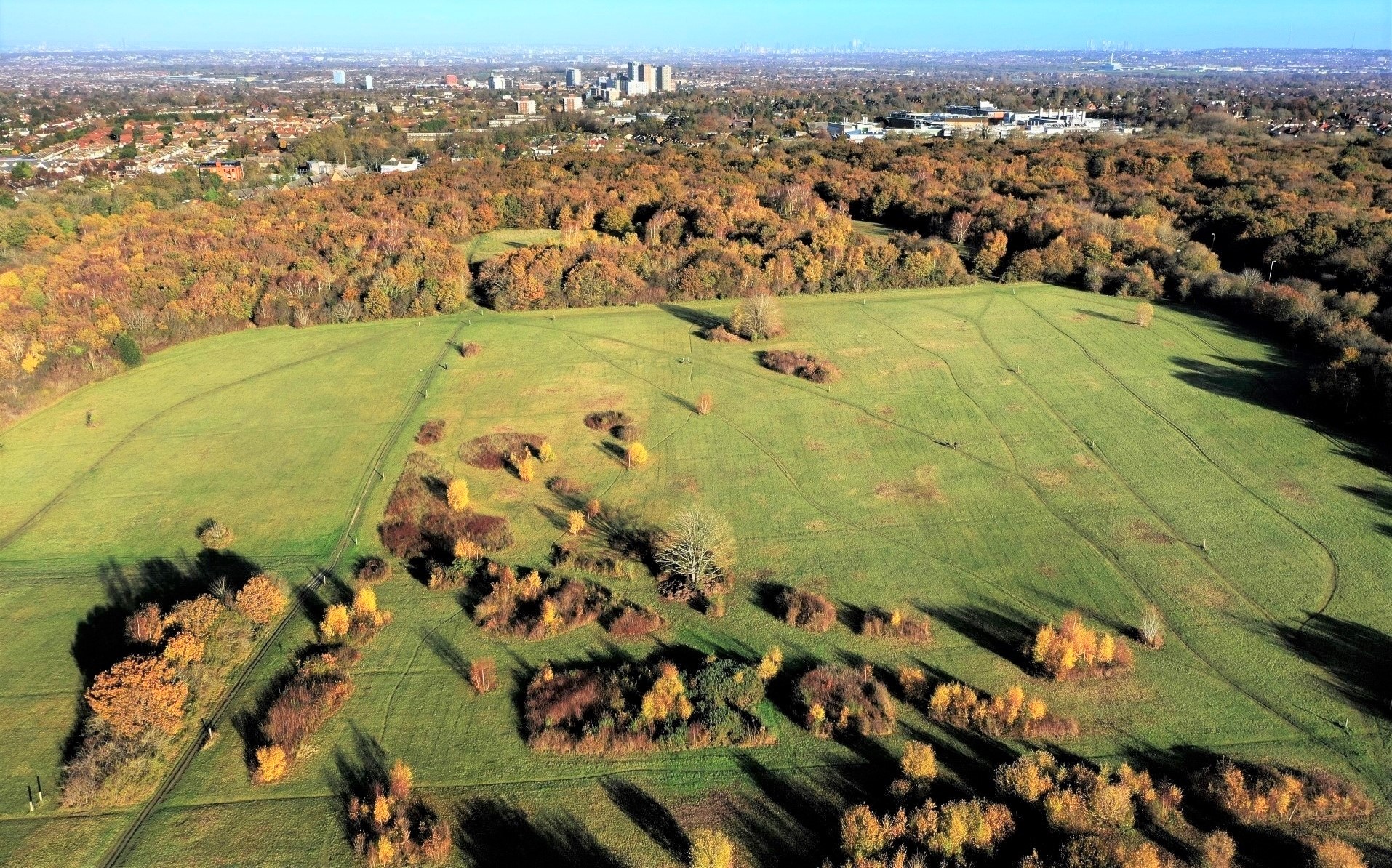
Banstead Downs. Sutton in the background and London just visible on the horizon.
Park Downs
74 acres of south facing chalk to the north of Banstead Woods. In 2021, the site was citated Favourable by Natural England. The grassland areas are bursting with biodiversity in the summer months. Buzzards, Kestrels and Red Kites can be seen here soaring in the thermals above the Downs. Summer warblers, such as the Chiffchaff and Common Whitethroat also use the site to breed.
There are a number of ancient chalk pits on and close to the top of Park Downs. The whole site was ploughed in WWII for farming and subsequently left to become overgrown and almost impenetrable. This resulted in the disppearance of many characteristic plant species. Clearance work and grazing means the Downs have reacquired the mixed habitats so important for wildlife.
There is a mixed flock of Herdwicks and Beulah Speckled Face sheep slowly working their way across the site to help reduce the sward height and create niche environments to promote biodiversity and meet the needs of the flora and fauna that can be found on the site.
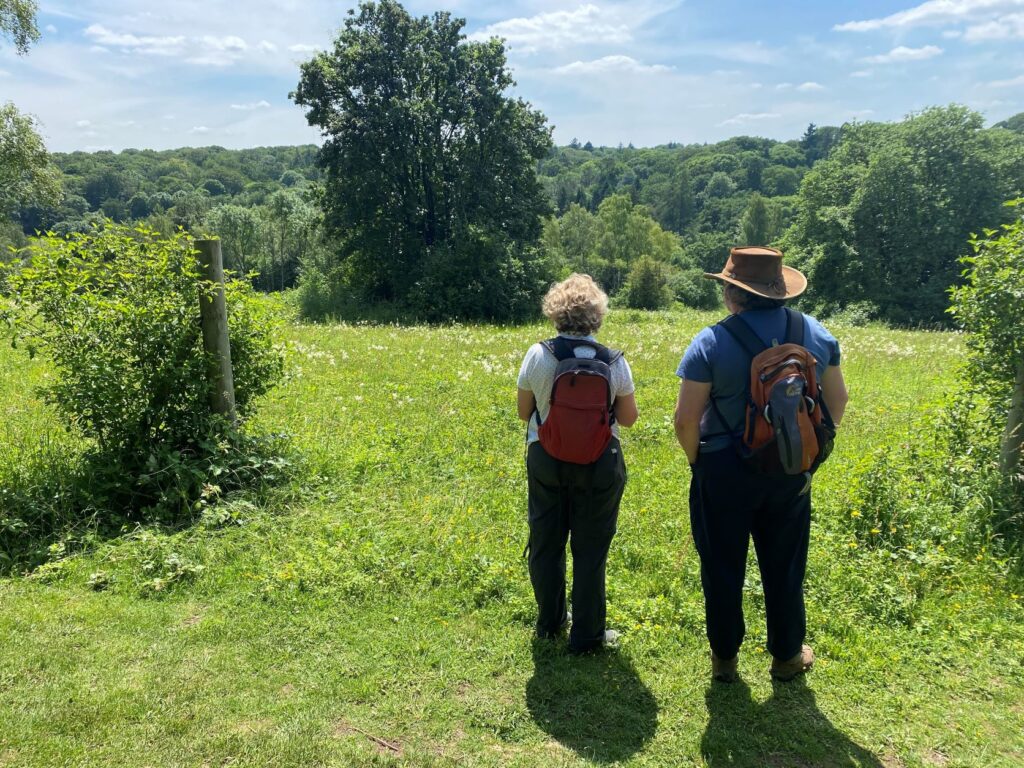
The view from Park Downs
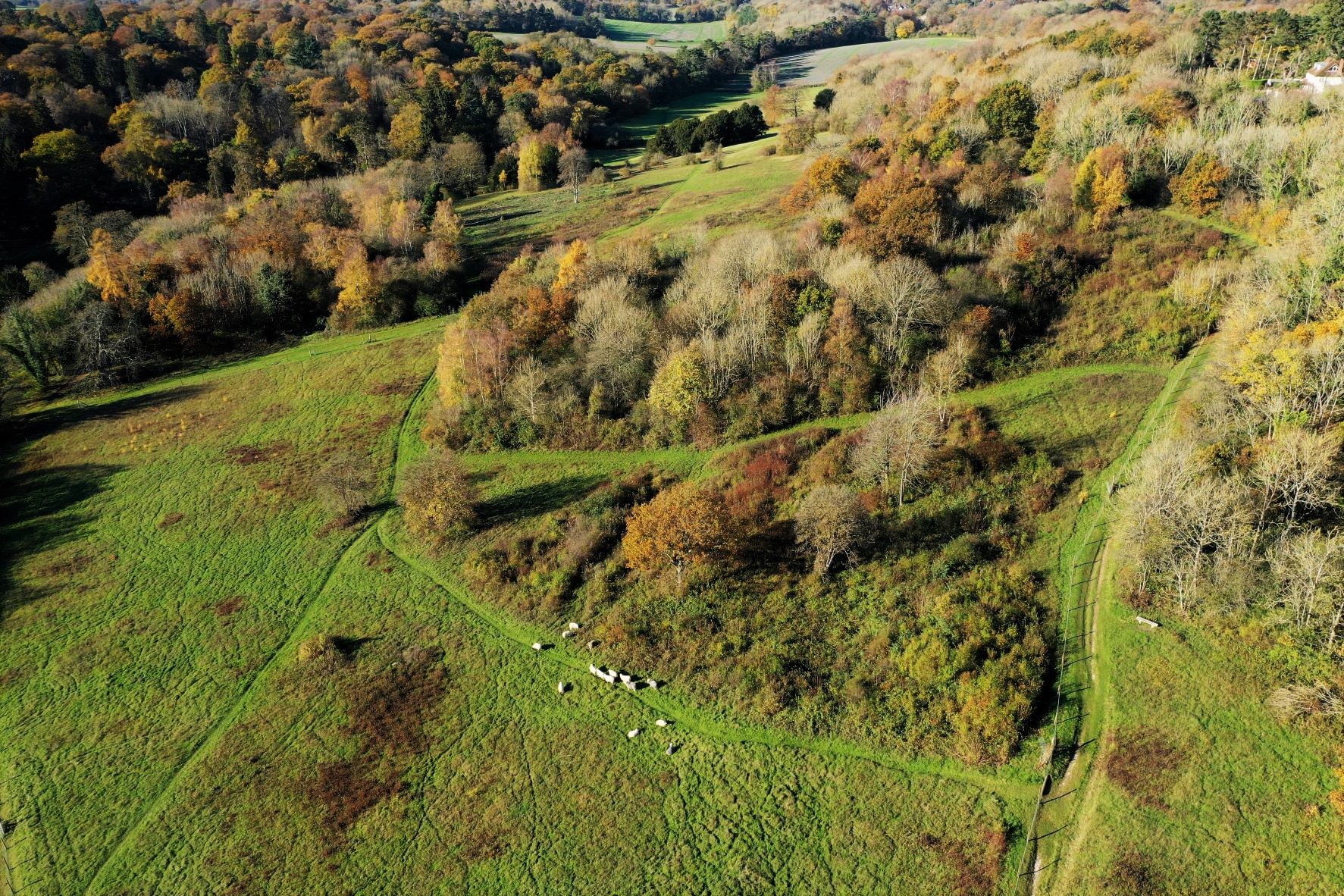
Park Downs. The grazing sheep are part of the ecolological habitat control.
Banstead Heath
760 acres located south of Burgh Heath adjacent to the A217, this is the largest area managed by BCC.
For such a large area, the fauna and flora of Banstead Heath is under recorded. This is partly because compared to many of the adjacent areas especially the Downs to the south, the area has a relatively poor variety of variety of species and hence of less interest. This is predominantly the result of the Heath having a long history as a working heath with all the disturbance and management that entails. One of the main aims of the current management policy of the BCC is to restore and enhance a range of habitats on the Heath especially with regard to the reestablishment of mixed lowland heath habitat that might be expected to occur on this type of soil, a habitat that has dramatically declined in recent times. All that said, the Heath is home to a wide range of breeding birds and mammals.
Sparrowhawks and buzzards nest on this site and many other species of birds have been noted to breed here including linnets, yellowhammers, white throats and skylarks. It also supports a thriving reptile population including the common lizard, grass snake and adder.
There are two clearly visible quadrangular earthworks on the western side of the Mill Field just south of the mill, probably medieval stock-holding pens.
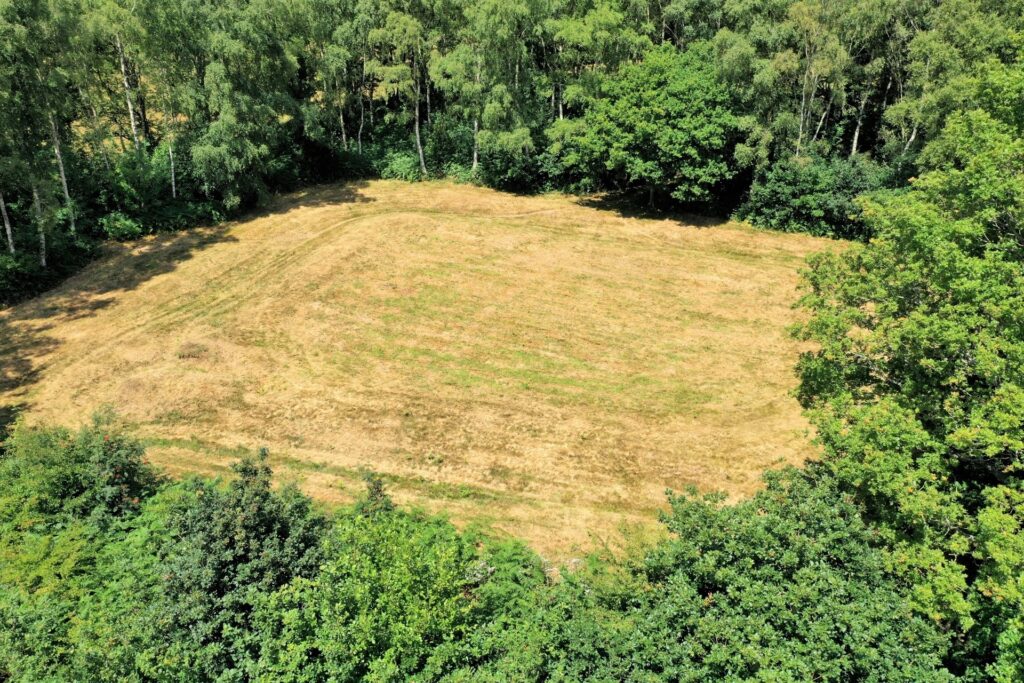
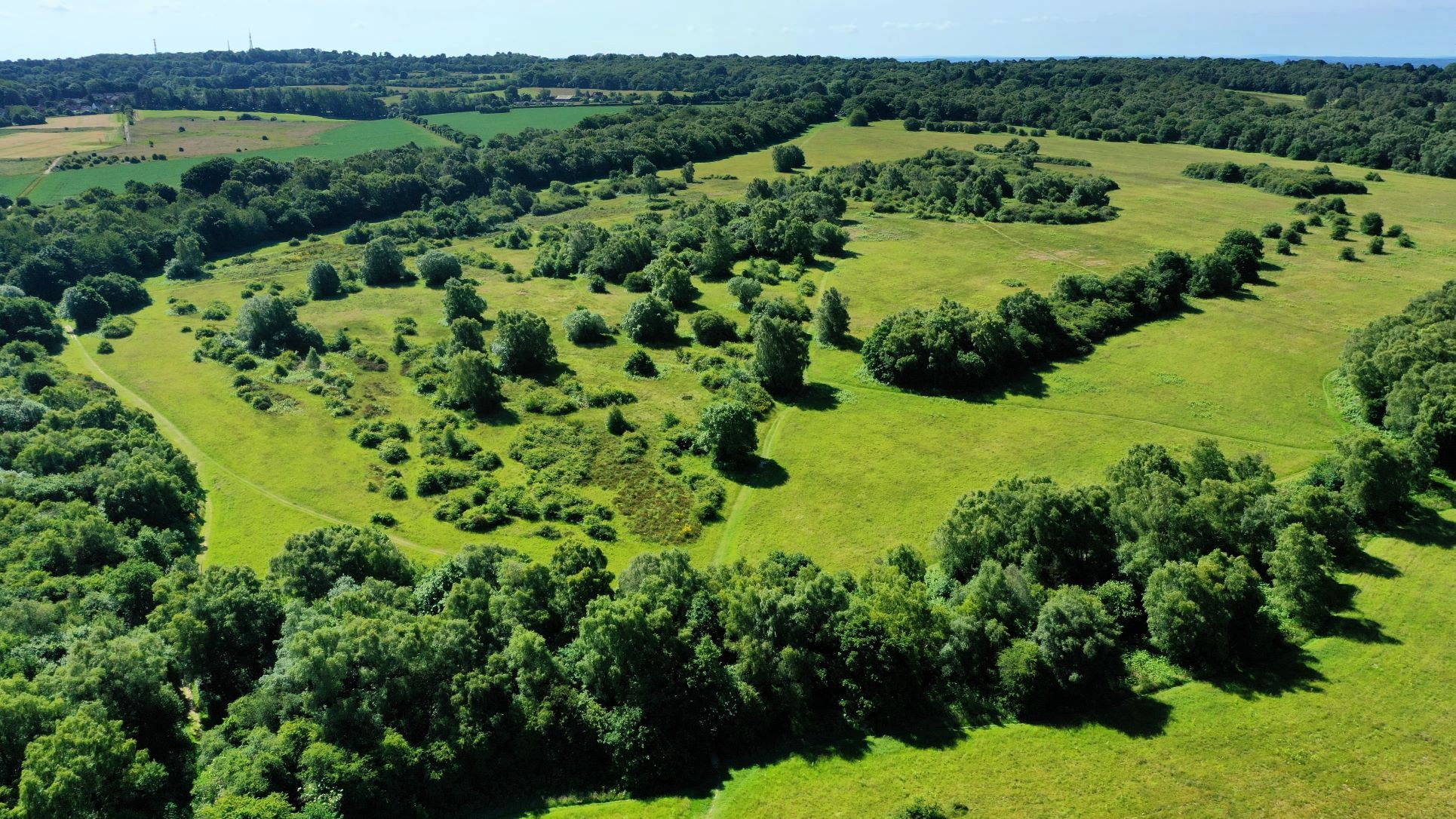
The southern section of Banstead Heath looking south towards Mogador.
Burgh Heath
78 acres surrounded by high density housing, this is closest to theTattenham Preston ward. The site includes dense woodland, grassy open spaces and four ponds including Burgh Heath Pond, home to ducks and heron.
It is dominated by the A217 and A240 which cross it. It is also surrounded by high-density residential property that results in a high level of pedestrian traffic on the many paths that cross the Heath. Despite these factors, although rarely free of traffic noise, the Heath still provides areas of woodland and woodland glades where relative peace can be found.
In 2014/15, as a result of residential development to the west of the Heath a new path was created crossing the Heath. As part of the preparations for the work the whole Heath was surveyed and from that a management plan for the Heath produced. A new site management plan will be produced in 2024.
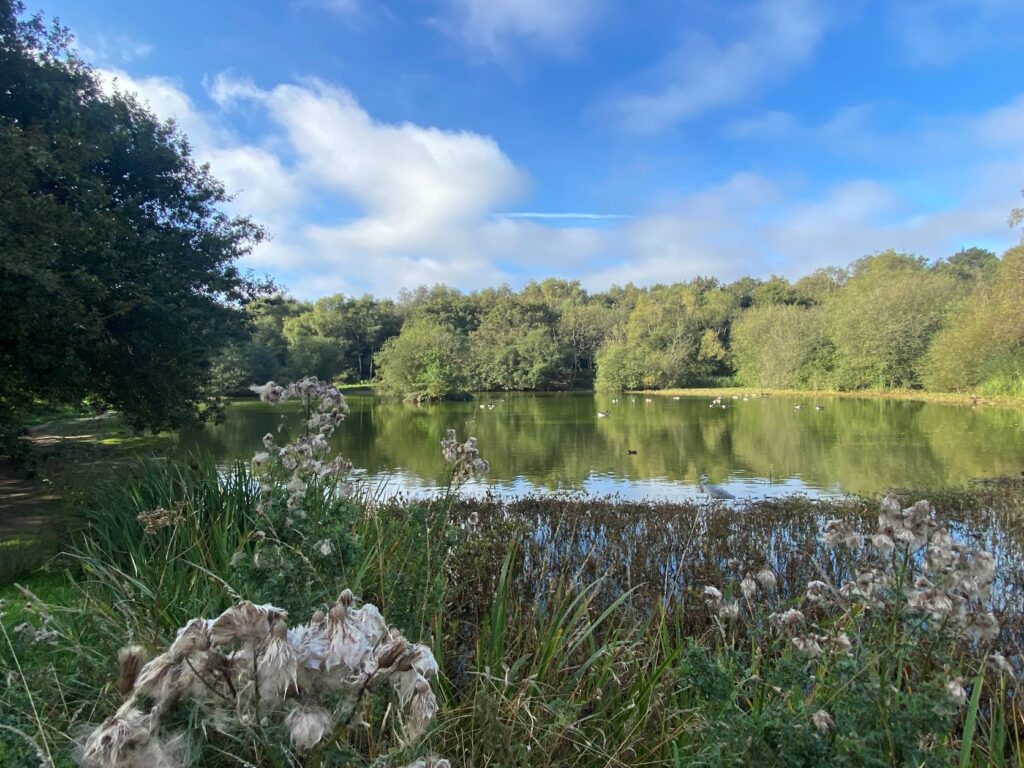
Burgh Heath Pond
The Future
The Conservators plan to enhance their value to the community by improving visitor engagement and accessibility. They are also liaising with other organisations to maximise their access to grants to support their land management programmes.
New land management plans for all four sites will be produced in 2024 and these will be instrumental in planning for the next 10 years.
We can help support the work of the Conservators by visiting their sites to appreciate the value they provide to the community. But, whilst doing so, take care not to spoil the environment when we visit. We can also volunteer to assist BCC with its work and encourage our councillors to be supportive of BCC’s financial requirements.
To find out more about the Banstead Common Conservators click on the link to visit their new website : https://bansteadcommons.org.uk
or check out their Facebook page : https://www.facebook.com/bcconservators/
